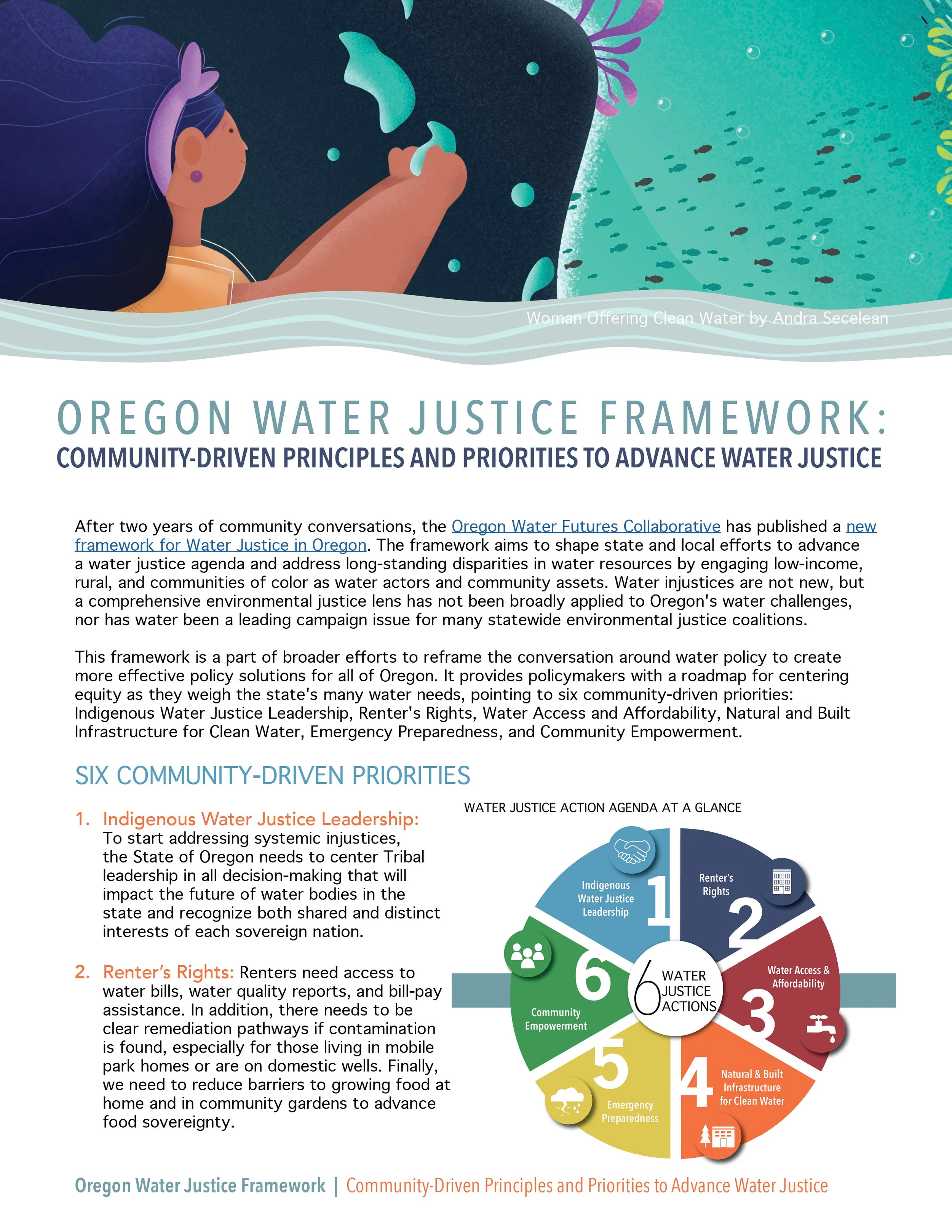Oregon Water Justice Framework
Community-Driven Principles and Priorities to Advance Water Justice
The Oregon Water Futures Collaborative has published a Water Justice Framework that shapes state and local efforts to advance a water justice agenda and address long-standing disparities in water resources by engaging low-income, rural, and communities of color as water actors and community assets. These communities offer creative solutions to water challenges that the state faces. The framework provides policymakers with a roadmap for centering equity as they weigh the state’s many water needs and points to six community-driven water justice priorities:
Indigenous Water Justice Leadership
Renter’s Rights
Water Access & Affordability
Natural & Built Infrastructure for Clean Water
Emergency Preparedness
Community Empowerment
This framework seeks to influence water policy by centering community voices as water actors and community assets. A project led and compiled by the Oregon Water Futures Collaborative.
Oregon Water Justice Framework
Download the Oregon Water Justice Framework summary!
Background
The Water Justice Framework builds on the experiences of approximately 200 community members and feedback from tribal governments, researchers, state agencies, utilities, and environmental organizations. The framework was led and compiled by Oregon Water Futures, a collaboration between Verde, Coalition of Communities of Color, Oregon Environmental Council, Willamette Partnership, and the University of Oregon’s Pacific Northwest Just Futures Institute and the Environmental and Natural Resources Law Center.
Authors (listed alphabetically): Lynny Brown, Stacey Dalgaard, Taren Evans, Jana Gastellum, Cheyenne Holliday, Perla Medina, Rose Poton, Alaí Reyes-Santos, Jordan Salcido, Isabel Sanchez, and Vivian Satterfield
Through a water justice lens, they aim to impact how the future of water in Oregon is imagined through storytelling, capacity building, relationship building, policymaking, and community-centered advocacy at the state and local level.


